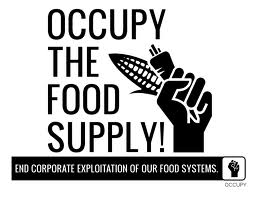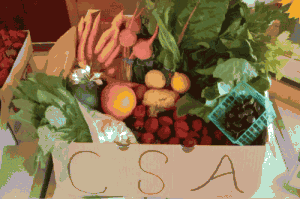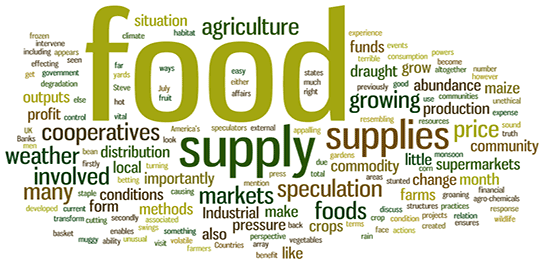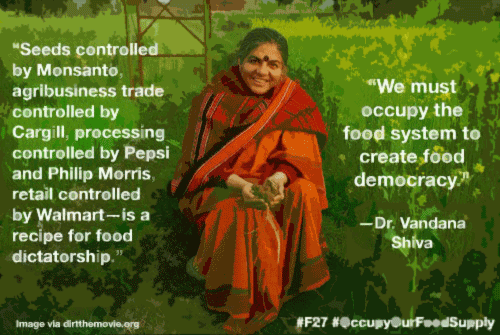When ever we visit supermarkets we see their shelves groaning with a diverse range of different foodstuffs, from fresh fruit and vegetables, to prepared meals right through to a bewildering array of frozen foods. So on the outset; it looks like we have an abundance of food and a sound supply chain from the farms to our plates via the middleman supermarkets. But this picture of abundance of our food supply is far from anything remotely resembling the truth, there is a very real cause for concern with almost every element of our food supply. But there are a number of ways that we can intervene in the control and distribution of our food supplies, before I discuss these interventions lets have a look at the problems that we face with the methods, supplies and distribution of our food.
Climate change
It July 2012 and there has been little mention in the press of the terrible draught conditions that are effecting the US, here in the UK we have been struggling with unusual monsoon type weather conditions that has effectively seen our summer transform into a rain sodden muggy state of affairs, in the US however they have experience month after month of hot draught weather which appears to be turning the great bread basket of America’s corn growing areas into dustbowls. This has led many US farmers to make the decision of either stunted and crops with little in return in terms of grain, or abandoning their crops altogether The response from the US government has been a warning that up to a third of the Countries soya bean and maize crop were in poor condition, with some states reporting much worse figures for outputs.
Commodity speculation
 On top of the pressure on our food supplies caused by climate change events such as the current spate of unseasonal weather there is also another pressure on our food which comes in the form of commodity speculation, with commodity speculation Banks, hedge funds and pension funds are betting on price in financial markets causing drastic price swings in staple foods such as wheat, maize and soy. These markets were originally developed for the benefit of those who are actually involved in the production of food, but over the last decade these markets have become dominated by speculators out to earn an easy buck, this unethical form of gambling on our most vital of resources has created a volatile and chaotic price and supply structure, and is significantly contributing towards global hunger and food poverty.
On top of the pressure on our food supplies caused by climate change events such as the current spate of unseasonal weather there is also another pressure on our food which comes in the form of commodity speculation, with commodity speculation Banks, hedge funds and pension funds are betting on price in financial markets causing drastic price swings in staple foods such as wheat, maize and soy. These markets were originally developed for the benefit of those who are actually involved in the production of food, but over the last decade these markets have become dominated by speculators out to earn an easy buck, this unethical form of gambling on our most vital of resources has created a volatile and chaotic price and supply structure, and is significantly contributing towards global hunger and food poverty.
Industrial agricultural practices
Industrial agriculture is all about maximising profit at the expense of everything else involved in the process of growing and producing food for our consumption. The negative inputs and outputs of industrial agriculture are many, including the pollution of water tables by the continuing use of agro-chemicals, a loss of wildlife and their associated habitat and most importantly from a human perspective the depletion and degradation of the very soil that enables our food to grow and sustain us in our daily lives.
Taking back our food supply
 As grim as the total situation is in relation to our methods and supply of food, there is something that we can do about this appalling situation, firstly and perhaps most importantly in our list of actions that we can take is the home production of food that we are able to grow in our gardens and yards, secondly there are external spaces like allotments and community growing projects that we can get involved in, thirdly there is CSA (community supported agriculture) where local communities work directly with the farms economically, which ensures local food supplies whilst cutting out the capitalist middle men who profit from our food supplies. Food cooperatives are also a good way of ensuring a sustainable food supply; in many cases food cooperatives have the ability to make previously unaffordable healthy organic foods more affordable due to the wholesale structures and buying powers of food cooperatives.
As grim as the total situation is in relation to our methods and supply of food, there is something that we can do about this appalling situation, firstly and perhaps most importantly in our list of actions that we can take is the home production of food that we are able to grow in our gardens and yards, secondly there are external spaces like allotments and community growing projects that we can get involved in, thirdly there is CSA (community supported agriculture) where local communities work directly with the farms economically, which ensures local food supplies whilst cutting out the capitalist middle men who profit from our food supplies. Food cooperatives are also a good way of ensuring a sustainable food supply; in many cases food cooperatives have the ability to make previously unaffordable healthy organic foods more affordable due to the wholesale structures and buying powers of food cooperatives.


